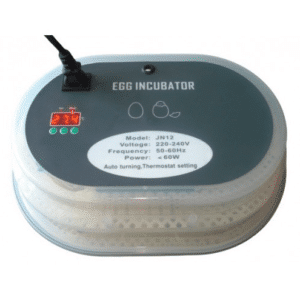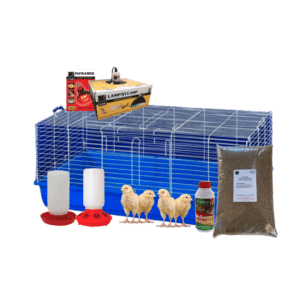Rearing Chicks
Raising baby chicks is such a rewarding experience and the bond these chicks form with you creates a totally different experience in keeping chickens.
Chicks are pretty low maintenance when you have the right setup, like with everything preparation is the key. Having the right equipment designed for the job will increase the success of your hatch and health of your birds. Here are some of the key events you will need to be prepared for.
Incubation
Not all incubators are created equal. This is one of the hardest lessons to learn when it comes to hatching your own chicks. Putting in all that time, love and hope for cute balls of fluff only to be let down by your incubator.
The rules are pretty simple, constant temperature and control over humidity are the two variables that can make all the difference, coupled with the essential automatic turning component. This can be done manually every 2 hours if you have nothing else to do but we highly recommend getting an incubator with an automatic egg turner built in.
Consider the location of your incubator and the temperature variations that may occur in that room, if the room has morning or afternoon sun this will impact the temperature of your incubator, if the time of year is particularly humid this can also impact the hatch rate.
Your incubator should have an external thermometer and hydrometer as well as the one that is built in, this will assist in calibration on your incubator.
Incubation Timeline
Eggs will be in the incubator for 21 days for chickens and 28 days for waterfowl and a further 24 – 78 hours once hatched to dry off, so this environment needs to be regulated and setup correctly.
It’s highly recommended you test out your incubator for 48 hours prior to setting eggs and use an external thermometer to calibrate your incubator. You are looking for consistency in temperature during the day and night.
When you first place your eggs in your incubator this will be considered Day 0 and for chickens they will then be left in the automatic turning trays for a further 18 days turning every 2 hours, on day 18 lockdown occurs where they will remain undisturbed for a further 3 days with hatching expected on day 21. (Do Not Open The Lid)
Don’t panic if your chicks don’t hatch the very minute they hit 21 days, allow for 12-24 hour window before panicking.
Sometimes chicks can hatch early and sometimes later than expected and this is usually the result of the temperature settings inside the incubator. Ideally for Chickens you are after 37.6 – 38 and humidity settings will vary depending on time of year and incubator locations.
What’s important is that the humidity levels reach 80% when the chicks are placed into lockdown, levels lower than this increase the chances that the chicks will not be able to break free of the egg membrane.
Candling Fertilized Eggs
The principal here is simple, around 7-10 days in a dark room you use a light source to shine light from underneath the egg illuminating the inside of the egg to check on the eggs development. When you see a darkened mass inside the egg and even the development of veins (Blood Supply) inside of the egg you know the egg has started developing. This is a good sign that your eggs are on their way.
Remember, once you remove the egg from the incubator you do run the risk of interrupting the incubation process so be as fast as you can, however the risk is justified.
Candling eggs allows for you to remove any eggs that haven’t developed removing the potential for unwelcome explosions of rotten egg juices. Something you never want to experience, trust me.
Candling can be repeated between day 15-18 to ensure the development has continued, again discarding any eggs that have stopped progressing is highly recommended.
On day 18 your chicken eggs are ready to go into lockdown for the next 3 days.
Lockdown
Lockdown has got to be one of the most exciting parts of incubating your own chicks, once those candled eggs go into that incubator the next 3 days are going to feel like they take forever whilst you wait for your first egg to pip.
Lockdown requirements are simple, in most cases you would be removing the eggs from the automatic turning device and placing then on their side inside the incubator. These eggs will no longer require turing, the air sack inside the egg will move to the highest point and the chick will use this area to pip (Crack through) their little shell home and start the journey to breaking free.
Humidity for lockdown should be high, this is achieved by increasing the amount of water inside your incubator, around 80% in most cases.
This high humidity keeps the internal membrane soft allowing for the chick to break free, if the humidity was to change rapidly i.e. you open the lid, the membrane will tighten and harden and shrink wrap you chicks inside their shell, this is not good, it will almost always result in a fatality so be patient and keep that humidity high and stable whilst in lockdown.
As the chick hatch you have up to 72 hours you can wait for all the chicks to hatch, as the first chicks hatch the chirping will encourage the others to hurry up so leaving them in the incubator is encouraged, they will dry off turn into fluff balls living off the nutrients they have received from the yolk.
Usually your chicks will be done hatching within 48 hours.
Chicken Brooders (Day 1 to 35)
Be warned, chicken brooders are fire hazards so they need to be setup correctly and be secure.
Within the first 72 hours of a chicks life they will need to be relocated into a brooder, before this is done make sure the chick is completely dry and fluffy, your chick should be active and have a clean bottom.
Chicks will require heat for the next 4-5 weeks or until they are fully feathered and able to maintain their own body temperature.
As chick develops its needs for heat change, you can look to either have a heat lamp with a regulator or simply adjust the height of the lamp to control the level of heat.
A tell tale sign that your heat is too hot is when the chicks avoid being underneath the lamp, in this case raise the lamp higher, if they are too cold and they are huddled directly underneath it’s possible you may need to lower the lamp thereby increasing the temperature.
We recommend using either a red coloured globe or a ceramic heat lamp, ceramic heat lamps omits no light only heat.
As the chicks develop feathers the need for heat is reduced and you will notice them spending more time away from the heat source. As a guide chicks around 5 weeks old should be fully feathered and able to survive without any external source of heat.
-
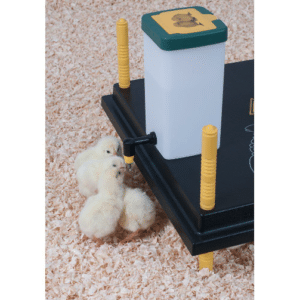
Poultry Drinker Chick Dropper 1L
$13.90 Add to cart -
Sale!
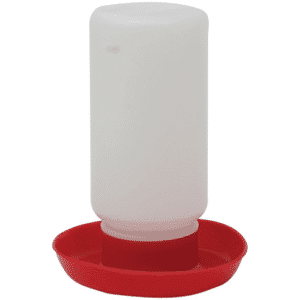
Poultry Drinker Crown Chicks 1L
$7.90Original price was: $7.90.$6.95Current price is: $6.95. Add to cart -
Sale!
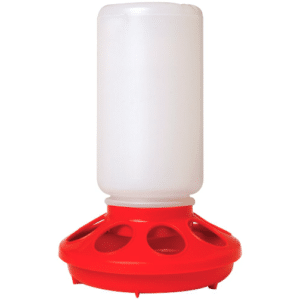
Poultry Feeder Crown Chicks 1kg (8-hole)
$10.90Original price was: $10.90.$9.95Current price is: $9.95. Add to cart -

Lamp Holder 30cm Assembly (nil lamp)
$49.90 Read more -

Lamp Holder 21cm Assembly (nil lamp)
$42.90 Add to cart -

Brooder Cage Lifestyle
$489.00 Add to cart -
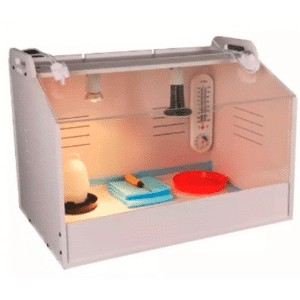
Chick Brooder Kit
$138.55 – $168.55 Select options This product has multiple variants. The options may be chosen on the product page -
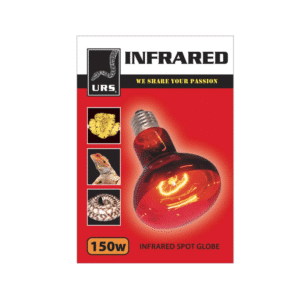
URS INFRARED SPOT LAMP 150W
$15.95 Add to cart -
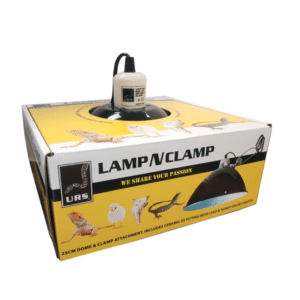
Lamp ‘N’ Clamp 250mm Diameter.
$49.95 Add to cart -

Thermometer Digital Monitoring
$29.90 Add to cart -
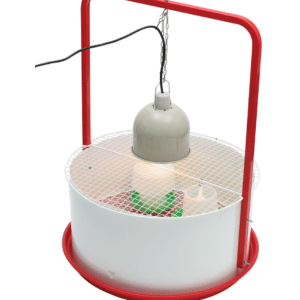
Brooder Tank Crown complete (excl lamp)
$369.00 Add to cart -
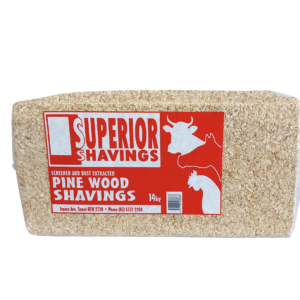
Superior Shavings – 14Kg
$14.95 Add to cart
To learn more about Keeping Chickens Click Here


